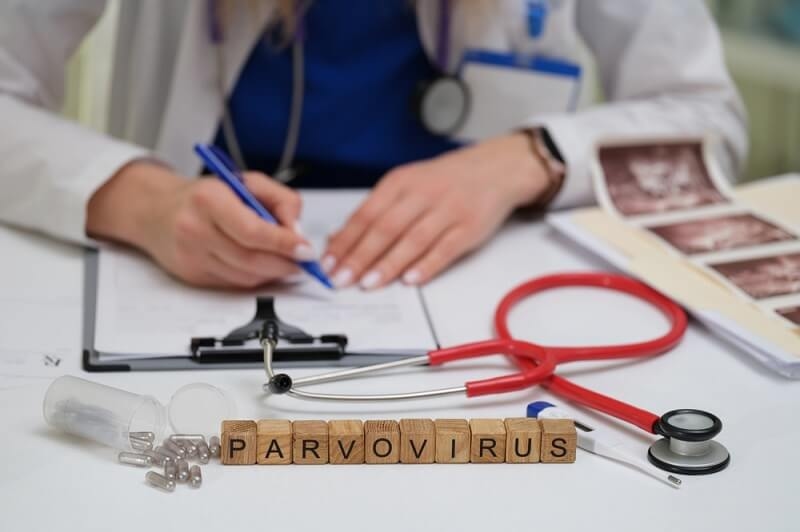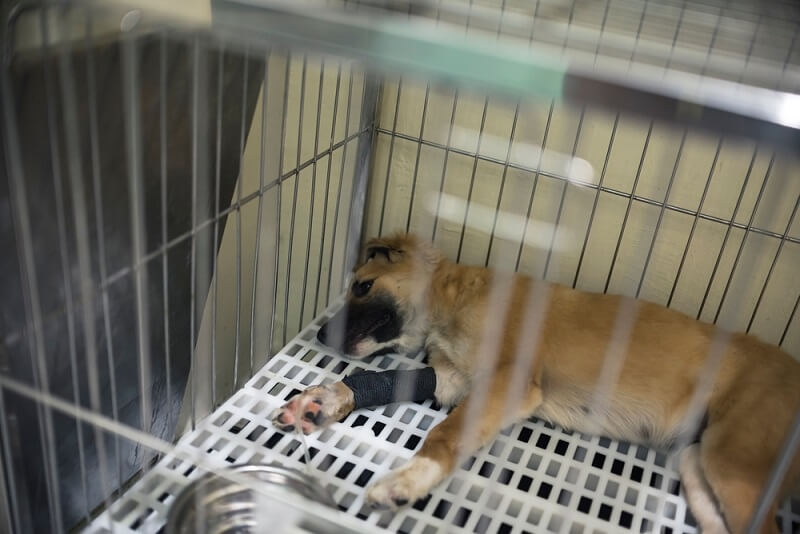
The bond with a new puppy is one of the greatest joys in life. Their mischievous energy and constant affections can brighten anyone’s home. However, for many dog owners, that joy is clouded by the threat of a powerful enemy: canine parvovirus. This fast-spreading and tenacious virus attacks a dog’s gastrointestinal system by rapidly multiplying, and with puppies, it can be fatal without immediate intervention. For any animal parent, knowing canine parvovirus symptoms is the first direct key to the race against a time clock. Before you read this guide for the first time, you should know that understanding parvovirus symptoms and treatment options can mean the difference between life and death. By reading the information ahead, you will be armed with knowledge for early detection, and you will find information to get through the sick time and on to recovery, along with prevention tips.
Before we understand the signs and symptoms, knowing what you're up against is essential. Canine parvovirus, or "parvo," is a viral disease that affects dogs and is highly contagious; puppies and unvaccinated adolescents are the most susceptible. The virus is tough and can live in the environment for months, if not years, and resist most standard disinfectants. The virus spreads through direct dog-to-dog contact and contact with some feces, contaminated environments, or contact with potentially infected people (for example, dog parks, boarding kennels, groomers, and training schools).
The virus has an affinity for rapidly dividing cells and will carry out its most devastating attack against the bone marrow and the small intestine lining. This attack will prevent the gut from absorbing nutrients and fluids and destroy the body's ability to mount a white blood cell defense against invasion, placing your puppy at risk of severe infection, sepsis, and/or shock.

When it comes to parvo, time is critical. The sooner you identify the warning signs and get your puppy to a veterinarian, the better. The incubation time after exposure is usually around 3-7 days. This early detection guide for parvovirus helps identify early warning signs that require immediate action.
The initial signs are often nebulous and can be confused for a less severe illness. Still, when you have a young, unvaccinated, or inadequately vaccinated puppy, you should take these very seriously:
Within 24 to 48 hours, these early signs quickly move to the more severe and classic stages of the disease.
As the virus assaults the intestinal lining, the characteristic signs of the parvovirus in puppies become apparent. If your puppy exhibits any of these symptoms, it is a veterinary emergency:
A puppy exhibiting these signs is in critical condition. Its body is losing the fight to keep hydrated and absorb critical nutrients, and its immune system is failing.
There is no specific pharmaceutical product that kills the parvovirus. As such, parvo treatment options revolve around aggressive supportive care to keep the puppy alive and comfortable while the puppy's immune system mounts a defense against the infection. Being hospitalized in isolation is nearly always necessary.
The foundation of treatment is intensive fluid therapy and supportive treatment:
In some situations, there may be more advanced treatment options for parvo, such as:
One of the most heart-wrenching questions a veterinarian hears is, "Will my puppy make it?" The parvo survival rate is not a single number; it depends heavily on several factors. With prompt and aggressive veterinary treatment, the survival rate can be as high as 80-90%. However, the parvo survival rate plummets to less than 10% without treatment. The outcome hinges on:
Even with the best care, the journey is a rollercoaster. The first 3-4 days of hospitalization are often the most critical, and seeing the puppy through this period is key to a positive outcome.
While treatment can be effective, prevention is infinitely better, cheaper, and less traumatic. Knowing how to prevent parvo in dogs is a pet owner's most potent tool. A multi-layered approach is essential for complete protection.
Understanding how to prevent parvo in dogs through vaccination and responsible ownership is the greatest gift you can give your furry family member.
Canine parvovirus is a formidable threat, but it is not unbeatable. By learning the critical canine parvovirus symptoms, acting swiftly with the guidance of a veterinarian, and committing to a rigorous prevention plan, you can shield your puppy from this devastating disease. Your vigilance, combined with the power of modern veterinary medicine, offers the best defense, ensuring your beloved companion has the chance to live a long, healthy, and happy life by your side.
This content was created by AI